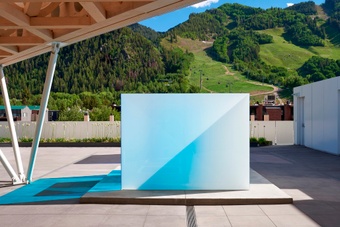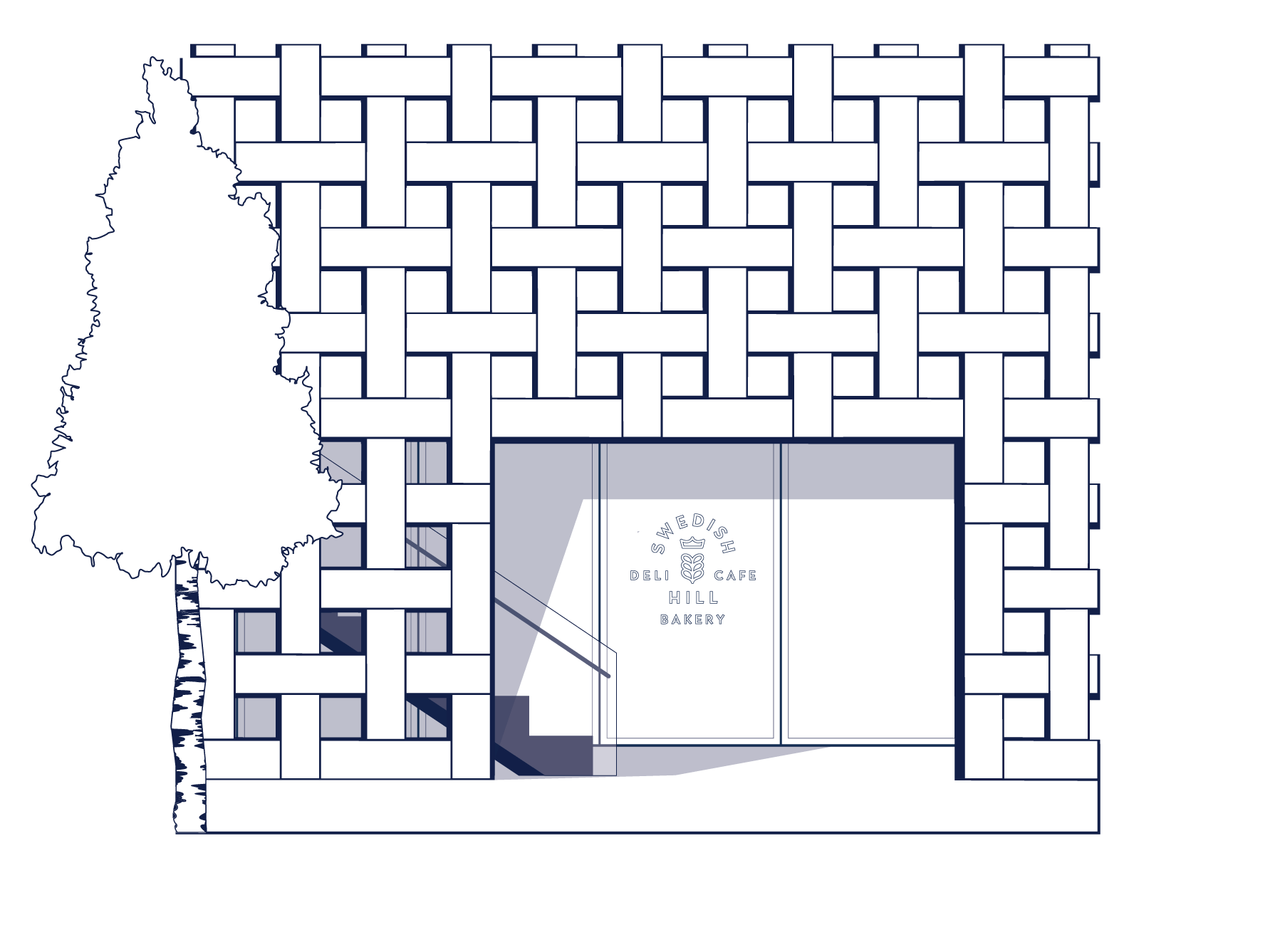Aspen Art Museum
ArtCrush Honoree: Jason Moran
Music and visual art have always been entangled, especially in the history of modernism, where dance, painting and radical new sonic palettes were counterposed from the start. Think of the dadaists at the Cabaret Voltaire during World War I or the coterie of multi-media performers that emerged from Black Mountain College or the Fluxus movement at mid-20th century. But, more often than not, it was the painters who seemed to take their lead from the musicians, as they waxed about the ways in which sound could bypass the symbolic world, spoke directly to the soul and resonated with all people. In a recent conversation, Jason Moran echoed that same sentiment, observing that acoustic vibrations can change the motion of water, a ect a listener’s chemistry: “Duke Ellington’s somber places open people up; Coltrane begins A Love Supreme in E minor, with a burst of energy; Stravinsky’s The Rite of Spring agitated to the point of causing a riot…and playing around the world you get a sense of what people are feeling.”
And play around the world Moran has, since he broke into the public consciousness as a young pianist, cut- ting a celebrated 1997 record for Blue Note label with saxophonist Greg Osby. A steady stream of solo projects—many regarded as instant classics—have followed. Elected a MacArthur Fellow in 2010, a relentless composer and committed educator, he is also the artistic director for jazz at the Kennedy Center in Washington, D.C. But, for all that, Moran is perhaps best known as a generous collaborator, who has shared the stage with many, and not only other jazz players. For instance, his groove on the electric piano anchored Luanda-Kinshasa, the speculative 1970s-era “documentary” made by Stan Douglas in 2013. Over the past decade, he has worked with a roster of leading visual artists: Adam Pendleton, Julie Mehretu, Joan Jonas, and Ryan Trecartin and Lizzie Fitch. With the latter two, known for their innovations in sound and video, Moran first connected for a multiday celebration he curated in 2016 for the reopened Veterans Room at Park Avenue Armory, and they will reprise their collaboration this summer at the Aspen Art Museum.
Visiting the retrospective of conceptual artist Adrian Piper at MACBA in Barcelona in 2004 was a turning point for Moran. Seeing her multimedia imagery—which frequently takes up questions of race and gender in America—in an unexpected context made him think about space differently. “Piper challenged me and I was never the same afterwards … she hit a frequency in that exhibition. Afterwards, I felt open.” He cites his ongoing creative dialogue with Jonas (a foundational figure in contemporary performance art, known for sustained meditations on women’s bodies and mythic forms) as a potent force that has shifted his approach to composition. But perhaps Moran’s commitment to blurring the lines between modes of creativity was inevitable. He points out that many jazz players—George Lewis, Anthony Braxton, Miles Davis—had a visual practice; they just weren’t always public about it. Furthermore, his parents were collectors in their own right and also kept “pottery under the piano, so the feeling around the instrument wasn’t sterile.” These experiences allowed Moran to connect to a deeper expressive tradition, exemplified by the creative cross-pollinations that inspired Biggers in the wake of the Harlem Renaissance, and which resonated anew with AfriCOBRA and the AACM in Chicago and beyond during the late 1960s. Such groups blurred the lines not only between the senses, but between the aesthetic and the social.
Reactivating histories in new contexts is at the core of Moran’s practice. Sometimes this is as simple as playing songs from another era to the next generation of listeners. Elsewhere, it means rescuing archives from obscurity, even if they are transformed in the process. For instance, for STAGED (2015–18) Moran created three-storied New York clubs in miniature. But not simply physical memorials to bygone places — they are each activated by live music or ghostly player piano rolls, each breaking the quiet of the gallery, suffusing it with new frequencies. The visual, in turn, allows Moran (and us) to perceive those same vibrations from a different vantage point. He notes that, as musicians, “we don’t ever get to see what a frequency is, so that’s something absent … but the relationship with the visual centers me. The reason I rely on that space is because being in a gallery sometimes helps answer questions I have about sound.”
Unsurprisingly, some of Moran’s most arresting pieces have emerged in his pursuit of sound made tangible, as in a series made by placing Japanese Gampi paper on his piano keys. Here, black and blue pigment are impacted onto the surface by the motion of Moran’s attack, or the unpredictable draw of gravitational forces. The results are beautiful streaks of abstraction. They call back to earlier passages in expressive American “action painting,” which Harold Rosenberg postulated, in a 1952 essay of the same name, as being like a recording of a blistering bebop session—the residue of an artist’s encounter with a moment in time and space. The series’ chromatic quality marks a visual and sonic interplay, the movement along diatonic scales registered in vibrant hues, the “black and blue” named in 1929 by Fats Waller and made famous by Louis Armstrong, Al Jarreau and many others.
The works on paper appear in museums and blue-chip galleries, providing evidence of Moran’s serious artistic chops as a solo artist. But, ever seeking the unexpected potential of dialogue, he seems most at ease in his role as “side man” or session player. Moran first visited Aspen decades ago to learn from Ellis Marsalis, while studying with what was then the Thelonious Monk Institute of Jazz (now the Herbie Hancock Institute of Jazz). When he reconnects with Trecartin and Fitch there this year, it will be something of a homecoming: summer is a time when musicians flock to Aspen to, in his words, “share thoughts on improvisation in the altitude.”
On August 2, Jason Moran will be presented with the Aspen Award for Art at the ArtCrush gala.
An experience with Jason Moran will be auctioned live at the ArtCrush gala on August 2nd. Read more about it here.













